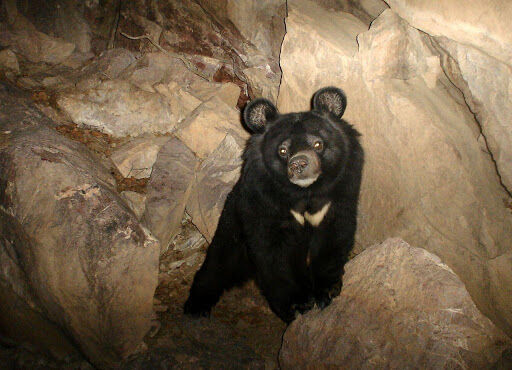The Black bear of Sistan and Baluchistan, also known as the Baluchistan black bear, is a fascinating and sadly endangered creature. Here’s some information about this unique subspecies: Description: Subspecies: Ursus thibetanus gedrosianus Size: Smaller than other Asiatic black bear subspecies, typically weighing around 130-200 kg (287-441 lbs) Fur: Short, coarse, ranging from black to reddish brown Distinguishing features: White crescent-shaped marking on the chest Long claws for climbing trees Relatively small ears and eyes Habitat: Lives in forested areas, especially hills and mountains, at 500-2700 meters (1640-8858 ft) altitude Found in provinces of Kerman, Hormozgan, and Sistan-Baluchestan in Iran, and Balochistan in Pakistan Diet: Omnivorous, feeding on fruits, berries, nuts, insects, small mammals, carrion, and even honey Ecology: Solitary animal Builds dens in caves or rock crevices Plays a vital role in seed dispersal and maintaining ecosystem balance Conservation Status: Critically endangered by the IUCN Red List Populations declining due to habitat loss, poaching, and illegal trade Conservation Efforts: Protected by Iranian law Establishment of protected areas like Bamu National Park and Kuh-e Bazman Wildlife Refuge Public awareness campaigns and community involvement Anti-poaching initiatives Interesting facts: Locally known as “Mam” in the Baluchi language Has excellent climbing abilities Plays a role in local folklore and mythology The Black bear of Sistan and Baluchistan is a precious part of the region’s biodiversity. Unfortunately, their future is uncertain due to human threats. By understanding and appreciating these special bears, we can support conservation efforts and ensure their continued presence in the wild landscapes of Iran and beyond.


